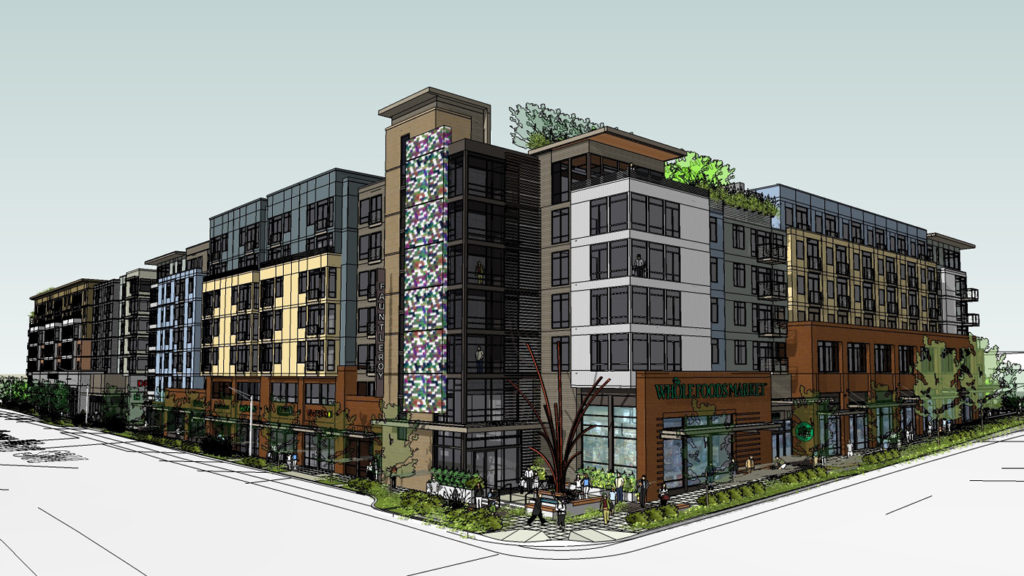Live, work, play isn’t just for city slickers anymore. More and more out-laying areas are becoming suburban metropolis. The concept for mix-use developments isn’t new, but it’s gaining steam in tree-lined, white picket fenced communities. Here’s why it’s the time to get in on the redevelopment.
Restructure Suburbia
Post World War II saw the enforcement of single use zoning in non-urban areas. You lived here, worked there, and played elsewhere. The residential market started pushing back on commute times to work and the constant ‘taxi cab service’ needed for activities. Back in the 1980’s, it started becoming apparent to many urban planners and developers that people were getting tired of all those points. First came the Planned Urban Development (PUD) which typically provided more open space in the residential sub-division used for ball fields, community centers, tennis courts and pools, all focused on the development. Single use zoning in place forced this type of popular development farther and deeper into the suburbs. In the 1990s, retail and office use were added as part of the mixed use development. As the concept continues to mature, we see height restrictions lifted in the case of variances (see 1000 Continental Blvd) allowing for greater density in a suburban market. The greater density attracts high-end retail. Corporations want to be close to labor, so it is natural to combine the uses. Local municipalities are being asked to increase density to preserve open space. Mixed-use developments reemerged as the answer. Since suburbia is skyscraper free for a reason, these mix-use developments addressed the height restriction issue by concentrating brick and mortar in a particularly defined area. It’s still preserves what we love, the bucolic settings of neighborhoods without disturbing the infrastructures already in place.
Out with Old and In with the New Ordinances
Recently two Philadelphia suburbs made a decision to keep and also attract residents and businesses that might have otherwise gone urban. King of Prussia and Ardmore decided to rewrite ordinances, allowing mix-use developments in their areas. Restructuring these areas even has the backing of the state who is allocating 12 million dollars for more parking near the Ardmore development.
Put Your Car in Park
A driving force behind mix-use developments is taking cars out of the equation. The single biggest issue for office occupier is parking. Ordinances have made it tough for builders to accurately accommodate all the cars. Corporations and even residents are willing to make a long term commitment only if there’s a robust public transportation system. The hope is these kind of developments will change the direction people are commuting to work.
Jackson Cross Partners Redevelopment Plan
Business owners and corporations want real estate to have a positive effect on ROI. Are mix-developments right for you? JCP can develop customized models based on previous experience using the client’s unique division variables, with mixed-use developments, analysis of monetary benefits to corporations, and contacts in the human resource management circles.
Bottom line
Anything that concentrates developments into specific areas which allows economy of scale, better environment sensibility and intelligent design, particularly along public transportation lines makes for a win-win for corporate clients, municipalities, and residents.

